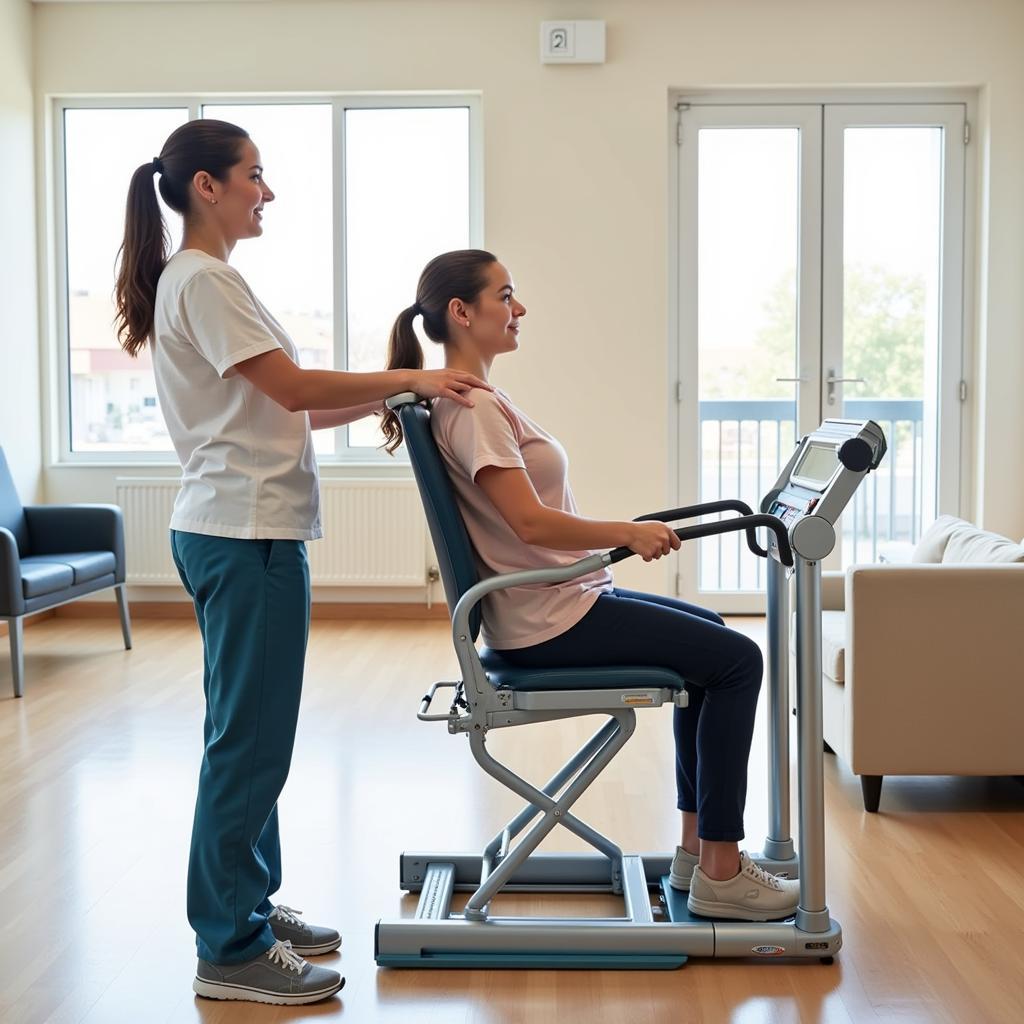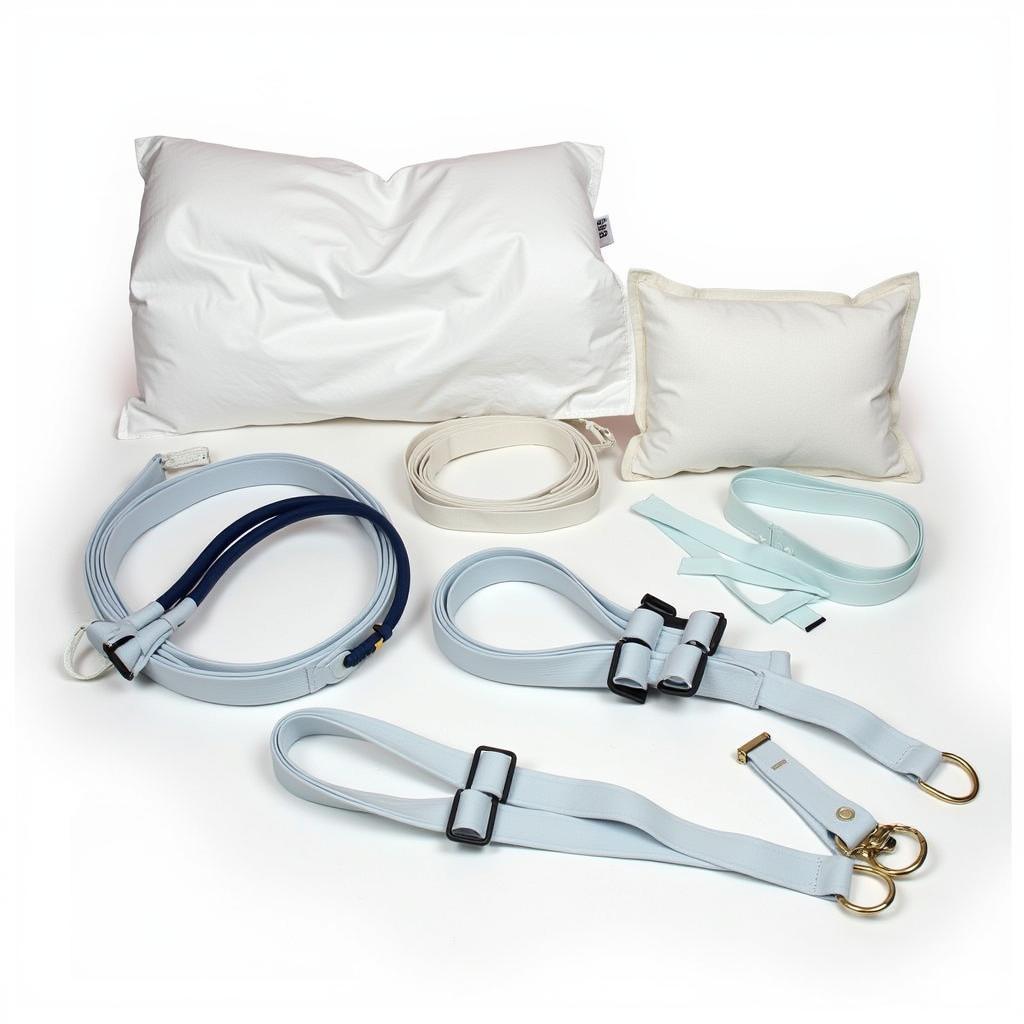Hospital Lifting Devices are crucial for ensuring the safety and well-being of both patients and caregivers. These devices play a vital role in minimizing the risk of injury during patient transfers, promoting patient comfort, and enhancing overall care quality. From simple slings to sophisticated mechanical lifts, understanding the various types of hospital lifting devices is essential for making informed decisions about patient care. Let’s explore the world of these essential tools and how they contribute to a more efficient and compassionate healthcare environment. Check out our selection of hospital sling.
Types of Hospital Lifting Devices
Various hospital lifting devices cater to different patient needs and mobility levels. Selecting the appropriate device depends on factors such as the patient’s weight, physical condition, and the specific transfer task.
Floor Lifts
Floor lifts, also known as mobile lifts or patient lifts, are versatile devices designed for lifting and transferring patients from beds, chairs, or the floor. These lifts utilize a hydraulic or electric system to raise and lower patients safely and smoothly. Floor lifts are particularly beneficial for patients with limited mobility or those who are unable to bear weight.
Ceiling Lifts
Ceiling lifts offer a permanent solution for patient transfers within a specific room or area. These lifts are mounted to the ceiling and utilize a track system, allowing patients to be moved easily between different locations, such as from the bed to a bathroom or therapy area. Ceiling lifts maximize space efficiency and minimize manual handling, reducing strain on caregivers.
Sit-to-Stand Lifts
Sit-to-stand lifts assist patients in transitioning from a seated to a standing position. These devices provide support and stability, enabling patients to regain some independence in their mobility. Sit-to-stand lifts are often used for patients undergoing rehabilitation or those with weakened lower extremities. An overbed hospital table can be a useful addition to a patient’s room.
Benefits of Using Hospital Lifting Devices
The use of hospital lifting devices offers numerous advantages for patients and healthcare professionals. These benefits contribute significantly to a safer and more effective healthcare environment.
Enhanced Patient Safety
Hospital lifting devices significantly reduce the risk of falls and injuries during patient transfers. By providing secure and controlled movements, these devices minimize the strain on both patients and caregivers, preventing musculoskeletal injuries and promoting patient well-being.
Improved Patient Comfort
Transfers can be uncomfortable and even painful for patients with limited mobility. Hospital lifting devices offer a smoother and more comfortable transfer experience, minimizing discomfort and anxiety.
Increased Caregiver Efficiency
By reducing the physical demands of patient transfers, lifting devices free up caregivers to focus on other essential aspects of patient care. This enhanced efficiency leads to improved overall care quality and a more positive work environment for healthcare professionals.
 Caregiver using a sit-to-stand lift to assist a patient
Caregiver using a sit-to-stand lift to assist a patient
“Investing in proper lifting equipment isn’t just about protecting our staff; it’s about demonstrating a deep commitment to the well-being of our patients,” says Dr. Emily Carter, a leading physical therapist specializing in geriatric care. “It allows us to provide truly compassionate care that prioritizes comfort and dignity.”
Choosing the Right Hospital Lifting Device
Selecting the appropriate hospital lifting device requires careful consideration of various factors. Assessing the patient’s individual needs and the specific transfer requirements is crucial for making informed decisions. Consider a hospital bed and lift for added convenience and mobility.
Patient Assessment
A thorough assessment of the patient’s weight, mobility level, and any underlying medical conditions is essential for determining the appropriate lifting device. This assessment should be conducted by a qualified healthcare professional.
Transfer Requirements
The specific transfer task also plays a role in device selection. For instance, transferring a patient from a bed to a chair requires a different type of lift compared to moving a patient from the floor.
Environmental Considerations
The physical environment, including space availability and accessibility, should be considered when choosing a lifting device. Ceiling lifts, for example, may not be suitable for rooms with low ceilings. If you’re visiting a loved one, consider what to bring a guy in the hospital or gifts for guys in the hospital.
 Ceiling lift installed in a hospital room for efficient patient transfers
Ceiling lift installed in a hospital room for efficient patient transfers
“Proper training on the use of lifting devices is absolutely essential,” emphasizes Nurse Practitioner Maria Rodriguez, who has over 20 years of experience in critical care. “It ensures both patient and staff safety and maximizes the effectiveness of the equipment.”
Conclusion
Hospital lifting devices are indispensable tools in modern healthcare, contributing significantly to patient safety, comfort, and overall care quality. By understanding the various types of lifting devices available and considering the specific needs of each patient, healthcare professionals can ensure safe and efficient patient transfers, promoting a more compassionate and effective healthcare environment. The use of hospital lifting devices is a testament to the ongoing commitment to improving patient care and creating a safer environment for both patients and caregivers.
FAQ
- What is the weight capacity of a typical floor lift?
- Are ceiling lifts suitable for home use?
- What type of maintenance is required for hospital lifting devices?
- How often should slings be replaced?
- What are the safety precautions for using a sit-to-stand lift?
- How do I choose the right sling size for a patient?
- Where can I find training on how to use hospital lifting devices?
 Different types of hospital lifting slings for varying patient needs
Different types of hospital lifting slings for varying patient needs
When you need assistance with hospital lifting devices, please contact us at Phone Number: 02437655121, Email: [email protected] Or visit us at: No. 298 Cau Dien Street, Minh Khai, Bac Tu Liem, Hanoi, Vietnam. We have a 24/7 customer service team.